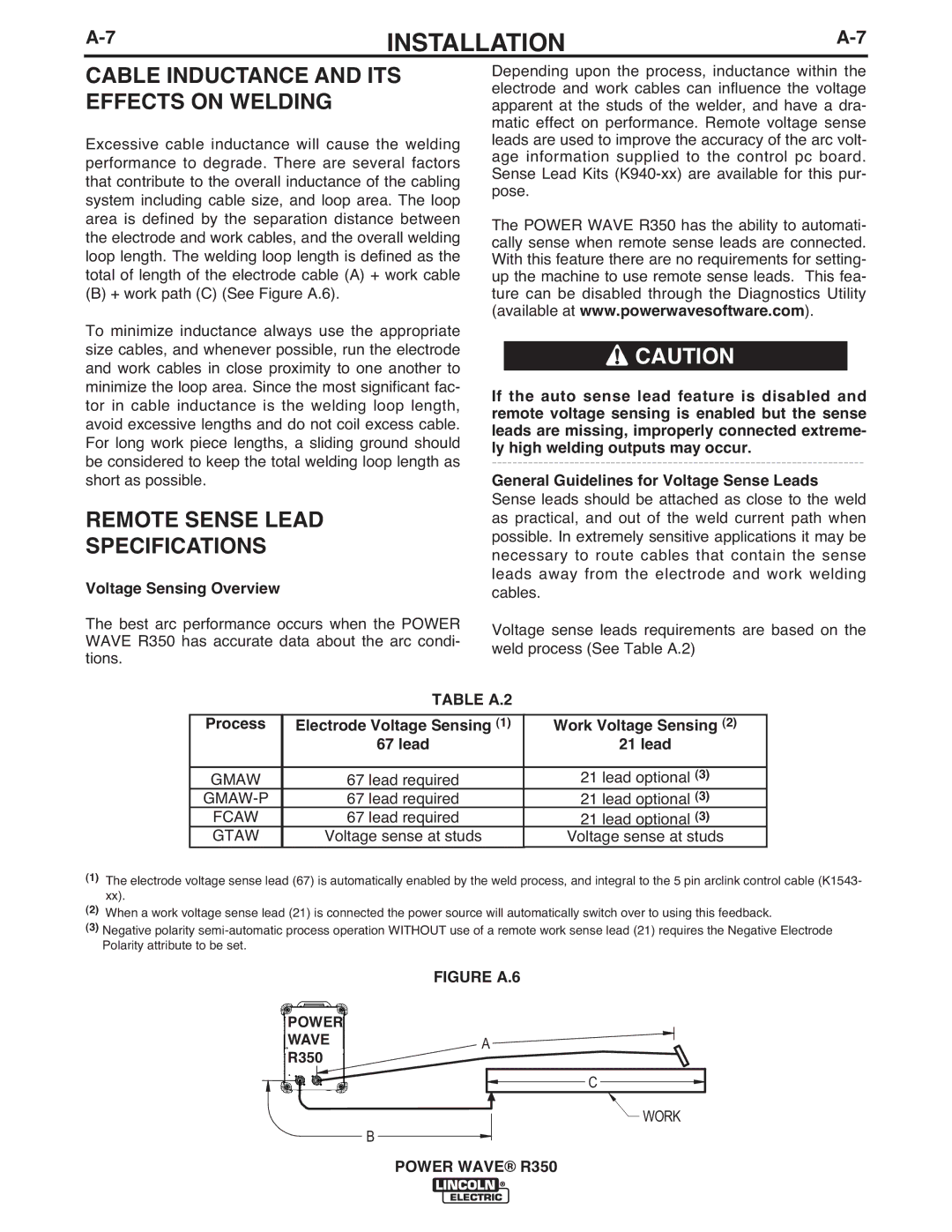
INSTALLATION |
CABLE INDUCTANCE AND ITS EFFECTS ON WELDING
Excessive cable inductance will cause the welding performance to degrade. There are several factors that contribute to the overall inductance of the cabling system including cable size, and loop area. The loop area is defined by the separation distance between the electrode and work cables, and the overall welding loop length. The welding loop length is defined as the total of length of the electrode cable (A) + work cable
(B) + work path (C) (See Figure A.6).
To minimize inductance always use the appropriate size cables, and whenever possible, run the electrode and work cables in close proximity to one another to minimize the loop area. Since the most significant fac- tor in cable inductance is the welding loop length, avoid excessive lengths and do not coil excess cable. For long work piece lengths, a sliding ground should be considered to keep the total welding loop length as short as possible.
REMOTE SENSE LEAD
SPECIFICATIONS
Voltage Sensing Overview
The best arc performance occurs when the POWER WAVE R350 has accurate data about the arc condi- tions.
Depending upon the process, inductance within the electrode and work cables can influence the voltage apparent at the studs of the welder, and have a dra- matic effect on performance. Remote voltage sense leads are used to improve the accuracy of the arc volt- age information supplied to the control pc board. Sense Lead Kits
The POWER WAVE R350 has the ability to automati- cally sense when remote sense leads are connected. With this feature there are no requirements for setting- up the machine to use remote sense leads. This fea- ture can be disabled through the Diagnostics Utility (available at www.powerwavesoftware.com).
If the auto sense lead feature is disabled and remote voltage sensing is enabled but the sense leads are missing, improperly connected extreme- ly high welding outputs may occur.
General Guidelines for Voltage Sense Leads Sense leads should be attached as close to the weld as practical, and out of the weld current path when possible. In extremely sensitive applications it may be necessary to route cables that contain the sense leads away from the electrode and work welding cables.
Voltage sense leads requirements are based on the weld process (See Table A.2)
| TABLE A.2 |
|
Process | Electrode Voltage Sensing (1) | Work Voltage Sensing (2) |
| 67 lead | 21 lead |
GMAW | 67 lead required | 21 lead optional (3) |
67 lead required | 21 lead optional (3) | |
FCAW | 67 lead required | 21 lead optional (3) |
GTAW | Voltage sense at studs | Voltage sense at studs |
(1)The electrode voltage sense lead (67) is automatically enabled by the weld process, and integral to the 5 pin arclink control cable (K1543- xx).
(2)When a work voltage sense lead (21) is connected the power source will automatically switch over to using this feedback.
(3)Negative polarity
FIGURE A.6
POWER |
WAVE |
R350 |
B
A ![]()
![]()
C |
WORK |
POWER WAVE® R350
